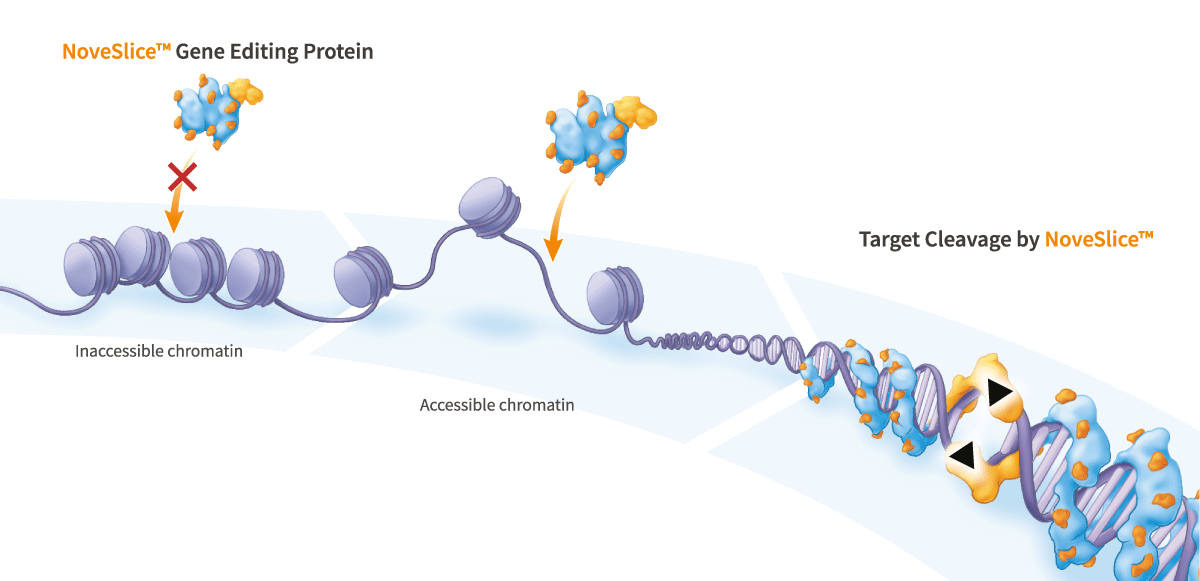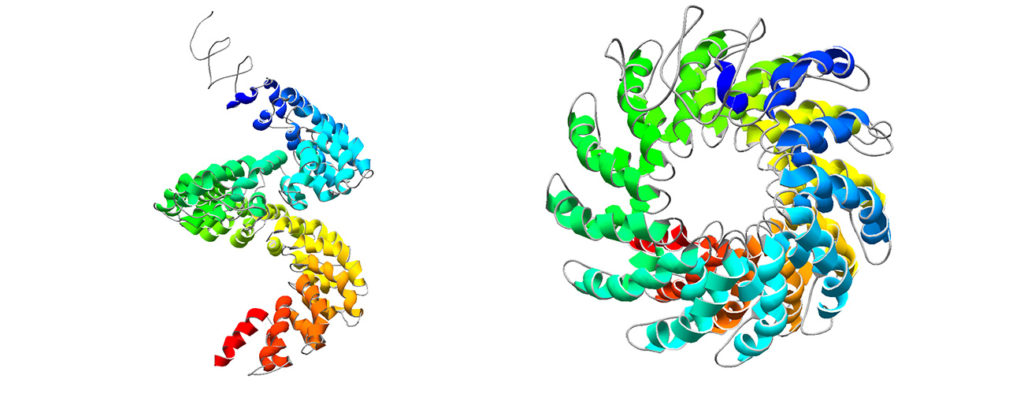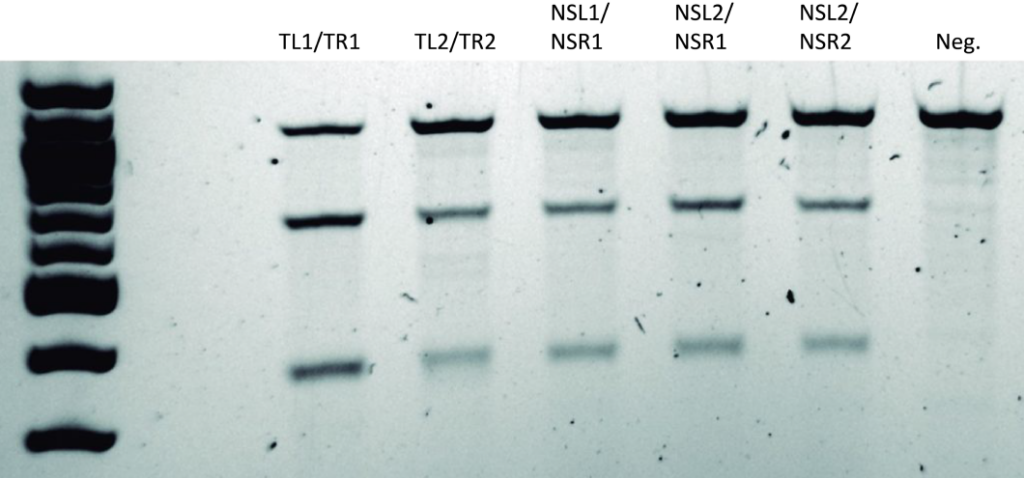Chromatin Context-Sensitive Gene-Editing Endonuclease
Download our Technology Catalog
Overview
Many uses of gene-editing proteins are limited by their specificity (“off-target” effects), which can be of particular concern when these proteins are delivered or expressed in vivo.
Our scientists developed a novel high-specificity gene-editing endonuclease that exhibits high efficiency on target cutting and enhanced sensitivity to the chromatin context of the target site1. The protein comprises an array of DNA binding repeat sequences connected by flexible linkers.
This technology can be used to target cutting activity to genes that are actively expressed, reducing off-target effects, minimizing cellular toxicity, and enabling enhanced safety for therapeutic applications.
The Chromatin Context-Sensitive Gene-Editing Endonuclease is protected by seven U.S. patents, as well as patents in Australia, Japan, and Mexico (with additional patents pending in the U.S. and in other countries). Of note, certain granted patents include claims that are not limited by disease indication, cell type, target sequence, or vector.
Example Applications
- Ultra-high efficiency editing of primary cells (up to 100% by IDAA assay1)
- Ultra-high specificity gene editing (e.g., express gene-editing proteins with 36-40-base target sequences)
- Combine with Factor’s mRNA Vectorization of Gene-Editing Proteins technology for virus-free and DNA-free gene editing
- Gene repair using a DNA-repair template
- Donor sequence insertion into a target genomic locus (e.g., TRAC, AAVS1 safe harbor, etc.)
- Gene-editing therapies (ex vivo and in vivo)
- Autologous and allogeneic engineered cell therapies (e.g., CAR-T, CAR-NK, stem cell-derived therapies, etc.)
- Combine with Factor’s mRNA Cell Reprogramming technology to generate models of genetic disease, gene-corrected patient-specific cell therapies, and allogeneic (i.e., immuno-nonreactive or “stealth”) cell therapies, including allogeneic pluripotent stem cell-derived CAR-T and CAR-NK cell therapies for the treatment of cancer, and engineered mesenchymal stem cell (MSC) therapies for regenerative medicine, wound-healing, inflammatory and auto-immune diseases, and tumor-targeting applications
1Kopacz, M., et al. Mol Ther, Vol 28 No 4S1, 2020.
Data


Representative Claim
U.S. Pat. No. 9,758,797
A composition comprising a nucleic acid encoding a gene-editing protein, the gene-editing protein comprising: (a) a DNAbinding domain and (b) a nuclease domain, wherein:
(a) the DNA-binding domain comprises a plurality of repeat sequences and at least one of the repeat sequences comprises the amino acid sequence: LTPvQVVAIAwxyzGHGG (SEQ ID NO: 75) and is between 36 and 39 amino acids long, wherein:
“v” is Q, D or E,
“w” is S or N,
“x” is N,
“y” is D, A, H, N, K, or G, and
“z” is GGKQALETVQRLLPVLCQD (SEQ ID NO: 670) or
GGKQALETVQRLLPVLCQA (SEQ ID NO: 671); and
(b) the nuclease domain comprises a catalytic domain of a nuclease.